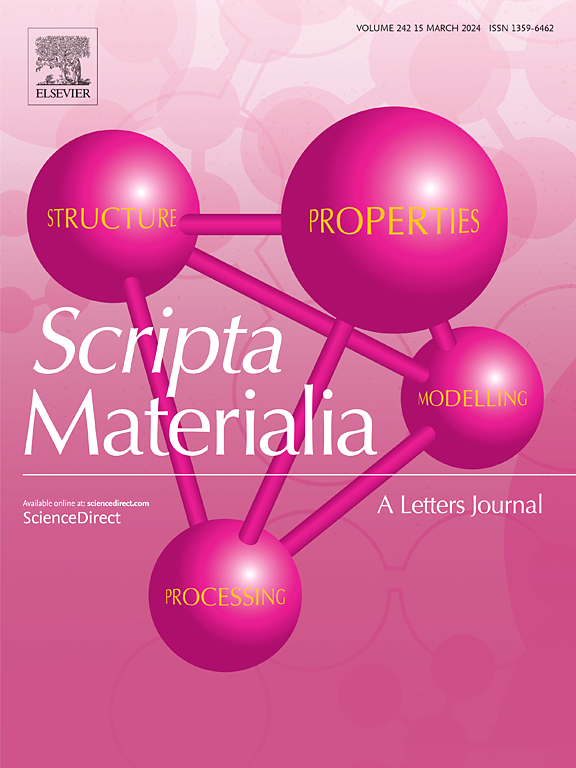纳米ti3c2是一种优良的锂存储负极材料
IF 5.3
2区 材料科学
Q2 MATERIALS SCIENCE, MULTIDISCIPLINARY
引用次数: 0
摘要
将晶粒尺寸从微米级减小到纳米级对锂离子电池阳极的性能有显著的促进作用。然而,关于MXene阳极的纳米工程研究却鲜有报道。本文通过引入碳作为助磨剂,成功制备了纳米ti3c2作为高性能阳极,其平均尺寸仅为38.7 nm。纳米ti3c2表现出高容量(在0.1 A g-1下738.6 mA h g-1),出色的倍率性能(在2/5/0.1 A g-1下395.5/331.1/524.4 mA h g-1)和出色的循环稳定性(4000次循环后99.4%的容量保持率)。理论计算的Li在Ti3C2与C之间的扩散动力学势垒小于Ti3C2与SiC或Si之间的扩散动力学势垒,这与实验观察结果一致,即C是最合适的助磨剂。本文章由计算机程序翻译,如有差异,请以英文原文为准。

Nano-Ti3C2 as an excellent anode material for lithium storage
Reducing the grain size from micron to nanoscale exhibits significant promoting effect on the performance of lithium-ion battery anodes. However, extensive investigation of nanoengineering on MXene anodes is scarcely reported. Herein, we successfully prepared nano-Ti3C2 as a high-performance anode by introducing carbon as the grinding aid, with an average size of only 38.7 nm. The nano-Ti3C2 shows high capacity (738.6 mA h g-1 at 0.1 A g-1), impressive rate performance (395.5/331.1/524.4 mA h g-1 at 2/5/0.1 A g-1) and outstanding cycling stability (99.4 % capacity retention after 4000 cycles). Theoretically computed kinetic barrier of Li diffusion between Ti3C2 and C is lower than that between Ti3C2 and SiC or Si, in agreement with experimental observations that C is the most suitable grinding aid.
求助全文
通过发布文献求助,成功后即可免费获取论文全文。
去求助
来源期刊

Scripta Materialia
工程技术-材料科学:综合
CiteScore
11.40
自引率
5.00%
发文量
581
审稿时长
34 days
期刊介绍:
Scripta Materialia is a LETTERS journal of Acta Materialia, providing a forum for the rapid publication of short communications on the relationship between the structure and the properties of inorganic materials. The emphasis is on originality rather than incremental research. Short reports on the development of materials with novel or substantially improved properties are also welcomed. Emphasis is on either the functional or mechanical behavior of metals, ceramics and semiconductors at all length scales.
 求助内容:
求助内容: 应助结果提醒方式:
应助结果提醒方式:


